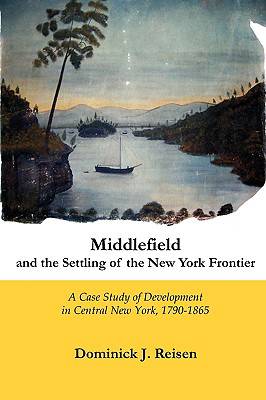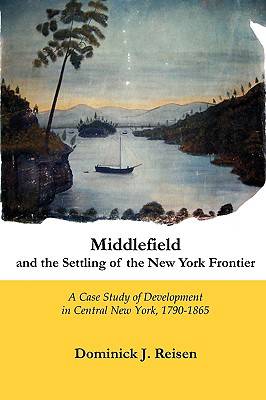
- Retrait gratuit dans votre magasin Club
- 7.000.000 titres dans notre catalogue
- Payer en toute sécurité
- Toujours un magasin près de chez vous
- Retrait gratuit dans votre magasin Club
- 7.000.0000 titres dans notre catalogue
- Payer en toute sécurité
- Toujours un magasin près de chez vous
Middlefield and the Settling of the New York Frontier
A Case Study of Development in Central New York, 1790-1865
Dominick J Reisen
Livre broché | Anglais
36,45 €
+ 72 points
Format
Description
More than just a mere history of one community, Dominick Reisen's scholarly exploration of Middlefield in Otsego County presents this rural, crossroads hamlet as a case study of the development of small towns in central New York State during the early years of the American Republic, through the Civil War. Reisen tracks the emergence and growth of various businesses and social groups within the community, tracing in great detail the lives of various key figures who made their home in Middlefield. He discusses how external agricultural factors and the great social movements of the era, such as temperance and abolition, impacted their lives inside the hamlet, both economically and socially. Viewing these ambitious personalities through the full spectrum of life, the author reveals how their interconnected lives and businesses led to a degree of prosperity and self-reliance in this secluded frontier settlement. This wide-ranging study's crucial value to historians, however, is the way in which Reisen uses Middlefield to illustrate the development of the entire region of central New York during the late eighteenth and early nineteenth centuries. He reviews the development of technological achievements such as the Erie Canal and railroads, and explains how these advancements in transportation alternately spurred growth and led to stagnation in various communities. He also provides significant discussion of the unique landownership patterns of central New York and how these arrangements led to social unrest and radical change, resulting ultimately in the Anti-Rent Wars during the second quarter of the nineteenth century. Middlefield and the Settling of the New York Frontier: A Case Study of Development in Central New York, 1790-1865 relies heavily on primary source material and is documented thoroughly with endnotes and indexed. The work is substantially illustrated with photographs and maps, and several appendices offer additional detailed information.
Spécifications
Parties prenantes
- Auteur(s) :
- Editeur:
Contenu
- Nombre de pages :
- 246
- Langue:
- Anglais
Caractéristiques
- EAN:
- 9780978906641
- Date de parution :
- 01-08-09
- Format:
- Livre broché
- Format numérique:
- Trade paperback (VS)
- Dimensions :
- 156 mm x 226 mm
- Poids :
- 371 g

Les avis
Nous publions uniquement les avis qui respectent les conditions requises. Consultez nos conditions pour les avis.






